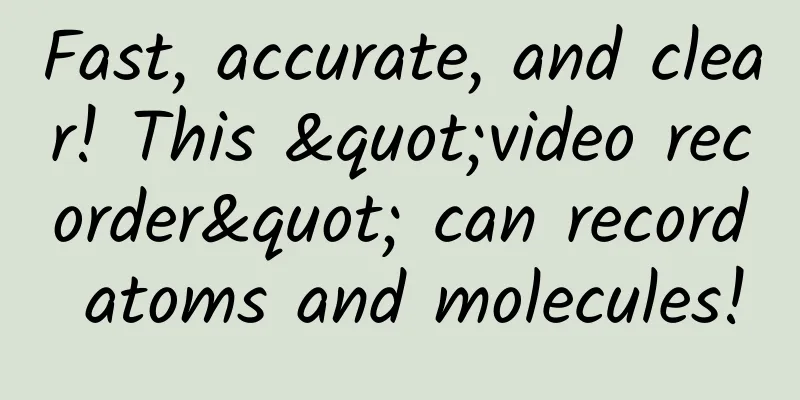Does breathing affect vision? Scientists discover mysterious rules of pupils →

|
Compiled by: Gong Zixin Like the aperture of a camera, the pupil controls the amount of light that enters the eye. As such, it is crucial to our vision and how we perceive our surroundings. For more than a century, three mechanisms have been known to change pupil size - the amount of light, focus, and cognitive factors such as emotions or mental activity. Now, scientists at the Karolinska Institute in Sweden have discovered a fourth - breathing. The study, published in the Journal of Physiology, shows that pupils are smallest when we breathe in and largest when we breathe out - which could affect how we see. "What's unique about this mechanism is that it's cyclical, always present, and doesn't require external stimulation," explains study leader Artin Arshamian, associate professor at the Department of Clinical Neuroscience at Karolinska Institutet. "Since breathing can affect brain activity and cognitive function, this finding may help to better understand how our vision and attention are regulated." The researchers conducted five experiments on more than 200 participants, systematically investigating how pupil size changes throughout the respiratory cycle while varying the task, lighting, gaze distance, and brain area involved. The findings consistently showed that pupils were smallest during inspiration and largest during expiration. This pattern held across conditions: regardless of whether participants breathed fast or slow, breathed through their nose or mouth, in bright or dim lighting conditions, focused near or far, at rest or during visual tasks, and with or without the olfactory bulb, a brain structure activated by nasal breathing. This effect is called the pupillary respiratory phase response (PRP response). Pupillary responses during the respiratory cycle in 5 experiments The difference in pupil size between inhaling and exhaling is large enough to theoretically affect vision. The researchers are currently exploring this further. Previous studies have shown that smaller pupils make it easier to see details, while larger pupils help us find hard-to-see objects. "The results suggest that within a single breathing cycle, vision may switch between optimizing the recognition of small details during inhalation and detecting faint objects during exhalation," said Martin Schaefer, the study's first author and a postdoctoral researcher at the Karolinska Institute. The researchers say the findings may also have clinical applications. "One potential application is to develop new ways to diagnose or treat neurological diseases, such as Parkinson's disease, in which impaired pupil function is an early sign of Parkinson's disease. This is a direction we want to explore in the future," said Artin Arshamian. |
>>: Why are you so tired even though you haven’t done anything?
Recommend
E-commerce live streaming | 2020 short video KOL live streaming e-commerce insight report
Today I’d like to share with you an analysis of h...
Does it require any handling fees to apply for a Baidu account across regions or to promote through the Baidu framework account?
For those who do Baidu bidding, they all face a p...
Which "anti-human" designs in life are actually very scientific?
appendix: References: Source: A scholar The cover...
The human brain's "speed" is slower than expected; new research suggests that dark energy may not exist | Technology Weekly
Compiled by Zhou Shuyi and Pingsheng Chimpanzees ...
Zhihu Money Making Camp: Earn over 100,000 RMB a month in 2 months with no basic knowledge
Zhihu sideline earning project practical camp, 0 ...
Event Promotion: How to do a good job in event review?
Since last year, I have started to learn how to r...
Video account to promote health tea practical project, easily earn 100,000+ per month [Video Course]
Video account to promote health tea practical pro...
Birthday wishes for African friends, is the black people’s birthday wishes video real?
Recently a group of children who made creative bi...
Mobile Map Technology Sharing
I am currently working in a domestic map navigati...
Electric Technology Car News: It is said that it is difficult to get a Shanghai license plate, but BYD Tang and Roewe eRX5 can easily get it
It seems not difficult to buy an SUV for less tha...
Pinduoduo's super hit trader full case course, teach you how to quickly break through the new store 0-1
Pinduoduo's super hot-selling operator's ...
What kind of grass is this two-meter-high grass on the grave?
The popularity of customs such as planting willow...
12K resolution! Fury X and Titan X are fighting again
We have just seen the top platforms of the four-w...
Help, why do you keep gaining weight? Because fat cells "remember" that you were fat...
I wonder if you have ever joined the army of weig...
Japan's Mount Fuji may erupt? Will it have an impact on my country?
According to a report by Japan's Jiji Press o...









